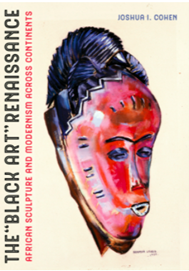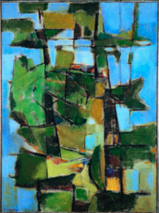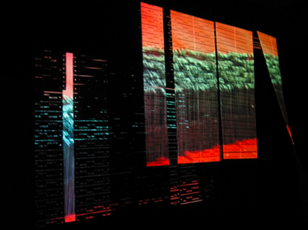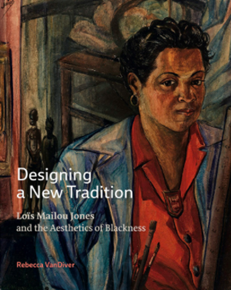CAA News Today
CAA Intern Spotlight
posted by CAA — Feb 10, 2022
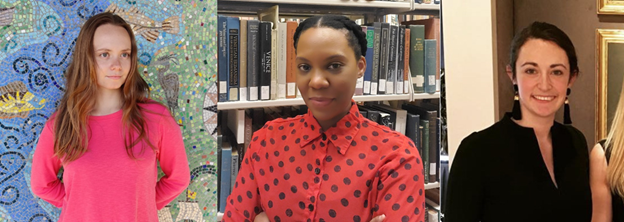
This week, CAA spotlights its three amazing interns who have been working with CAA since early fall 2021: Development Intern, Viktoriya Molchanova, Editorial Intern, Keshawna Mooney, and Grants Administration Intern, Astrid Tvetenstand. Learning to work remotely for an organization as a young professional is no small feat and we thank them for their dedication, enthusiasm, and support.
Development Intern: Viktoriya Molchanova
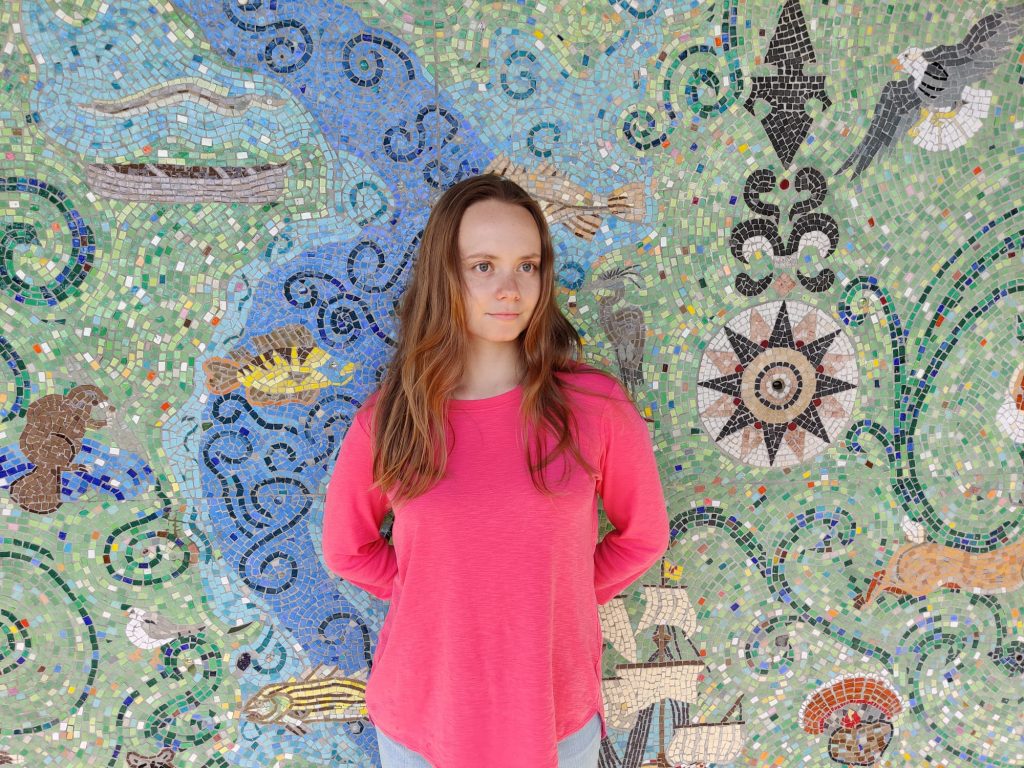
How has your experience at CAA affected you?
As a flutist with a performing arts background, I did not know much about the visual arts. As an aspiring future arts administrator, I wanted to take an internship at CAA to expand my knowledge and work experience specifically in the visual arts. Throughout these months, I have gained a deeper understanding of the visual arts world from its accomplished scholars to its dedicated funders. My great-grandfather was a visual arts scholar and attended many international visual arts conferences. I am happy to continue his legacy through my internship at CAA.
What is your favorite kind of art and why?
My favorite art is The Unicorn Rests in a Garden from the Unicorn Tapestries at the Met. The tapestry reminds me of a time when I arrived in elementary school as a first generation immigrant. It was challenging to learn the English language and assimilate into a new culture. However, the arts education at my school helped me overcome my struggles. My visual arts teacher saw that I enjoyed looking through his art book on unicorns. As a kind gesture, he gave me the book as a gift. After all these years, I still keep book as a reminder of the transformative power of arts education on my life and career.
Viktoriya Molchanova is a graduate student in the Arts Administration Master’s program at Baruch College and holds two Bachelor’s in Arts Management and Classical Instrumental Performance from Purchase College. She won the Nagelberg Family Scholarship in Arts Administration in 2021 and the SAMMIE Award for Outstanding Achievement in Arts Management in 2020. Viktoriya is in her last semester at Baruch College and is writing her Master’s thesis. Viktoriya is happy to connect on LinkedIn.
Editorial Intern: Keshawna Mooney
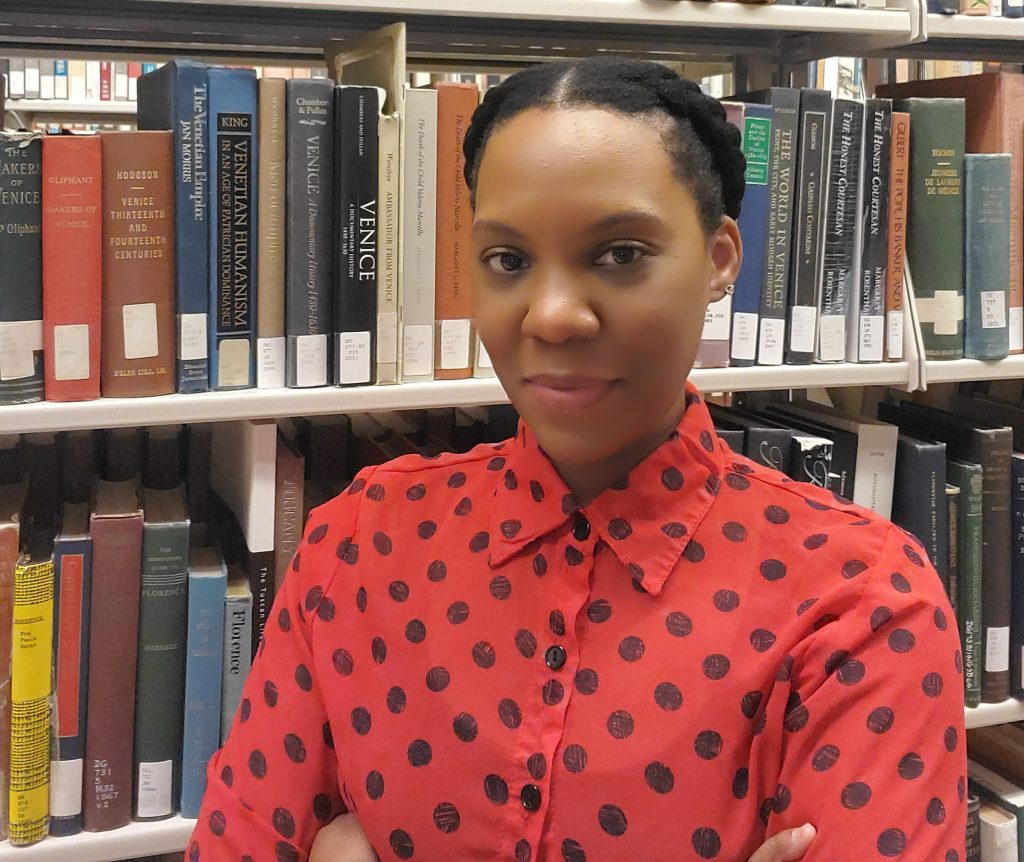
How has your experience at CAA affected you?
My internship at CAA has been an amazing experience. I have learned so much about the publishing process and become more familiar with specific style guides which were both specific goals I had for myself. It has been great to work with such an encouraging supervisor that has allowed me to advance these skills and grow as a young professional. I am also proud to have been part of the team that assists artists, scholars, and other art lovers in presenting their work and ideas to an audience.
What was something you learned that was unexpected?
I have been amazed to learn the amount of work that goes into journal publishing. Being able to work on all journals simultaneously has been exciting and learning to prioritize while juggling multiple projects has helped strengthen my time management skills even further. I have also discovered that the editing process is a much more collaborative experience as opposed to solitary, and it feels great to know that I have support and guidance when I need it.
What is your favorite kind of art and why?
While I love all forms of art, my favorite kind of visual art would be street art because you can find it almost anywhere and sometimes in the most unexpected places. In addition to its accessibility, street art takes concepts many of us recognize and positions them in ways so relatable that tells us we are seen and maybe even understood. Some of my favorite street artists include DAZE, Bambi, and WRDSMTH.
Keshawna Mooney is an Editorial Intern at CAA. She is a junior at CUNY Brooklyn College majoring in English and Creative Writing. Her goal is to present multilayered characters in their most complicated, contradictory, and raw forms. She is also a winner of the 2021 James Tolan Award for her essay “Lolita: The Unknowingly Irresponsible Girl Child.” She has worked as a supplemental instructor at BMCC working with students to develop and improve their writing skills and as an English literacy volunteer with adult populations. After graduation she hopes to be able to continue doing the work she loves, telling interesting stories and helping others tell theirs. In her spare time, you can find her wandering around art museums, enjoying theater, or curled up with a good book.
Grants Administration Intern: Astrid Tvetenstrand
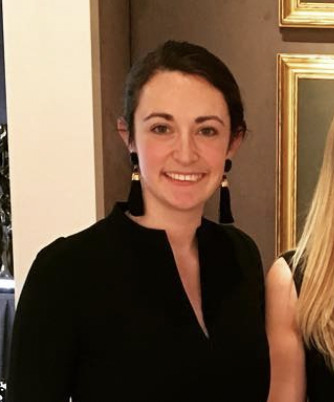
How has your experience at CAA affected you?
Working at CAA has exposed me to the larger community of art historians outside my discipline. Everyone at CAA is building a productive network of professionals, scholars, emerging leaders in the field who are building each other up and sharing resources. I have learned so much about how grants and awards are administered to simultaneously give people more opportunities for their work.
What was something you learned that was unexpected?
I learned that juries make hard decisions and are ultimately trying to celebrate and grant as many projects as possible. Before working at CAA, I had only ever experienced the application process and had not given too much thought to what happens after you click the submit button. Listening to the juries’ debate was illuminating and FUN. The process is complex, intellectual, and ultimately much more nuanced than I previously thought.
What is your favorite kind of art and why?
I love nineteenth-century American landscape painting because it is beautiful, complicated, and speaks to so many important themes and topics within our shared history.
Astrid Tvetenstrand is a fourth year PhD candidate in the American & New England Studies program at Boston University. She studies the history of American painting, decorative arts, and architecture. She explores these fields through practices of collection, economic development, and the consumption of American property. Her dissertation examines late nineteenth-century American landscape painting’s role in the creation of seasonal colonies. By investigating art’s relationship to the development of property, she analyzes the socioeconomic framework which shaped both the visual content and physical market of landscape painting. She looks at the role of nature in the lives of nineteenth-century Americans and how it influenced the creation of art and commerce in the United States.
Black History Month and caa.reviews
posted by CAA — Feb 03, 2022
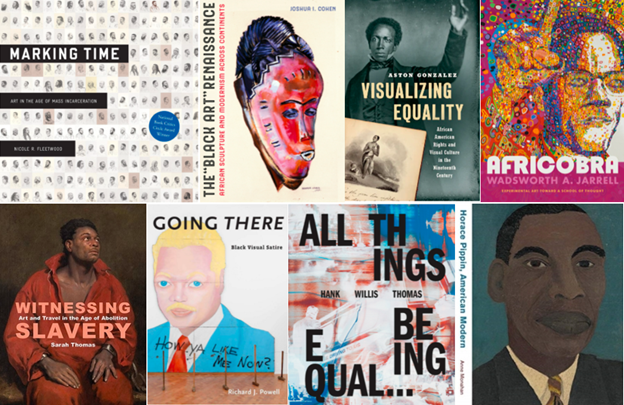
Each week this Black History Month, we highlight the rich scholarship and programs produced at CAA that celebrate, recognize, and interrogate Black art, history, and experience. This week, we are sharing a bibliography of publications and exhibitions reviewed on our online, open-access journal caa.reviews from this past year that addresses these topics.
caa.reviews also houses rosters of dissertation titles in progress and completed since 2002 and many long-form essays that intersect with these themes as well, such as current Editor-in-Chief of Art Journal, Eddie Chambers, essay Reflections on African and African Diaspora Art from 2016.
 Childs, Adienne L. Riffs and Relations: African American Artists and the European Modernist Tradition. Washington, DC and New York: Phillips Collection in association with Rizzoli Electa, 2020.
Childs, Adienne L. Riffs and Relations: African American Artists and the European Modernist Tradition. Washington, DC and New York: Phillips Collection in association with Rizzoli Electa, 2020.
Sanford Biggers, Negerplastik, 2016, repurposed antique quilt, cotton fabric fragments, tar, and glitter, 81 × 76 3/4 in. (205.7 x 195 cm) (photograph by Todd-White Art Photography, provided by Massimo De Carlo, Milan/London/Hong Kong)
 Choi, Connie H., Thelma Golden, and Kellie Jones. Black Refractions: Highlights from the Studio Museum in Harlem. New York: Rizzoli Electa, 2019.
Choi, Connie H., Thelma Golden, and Kellie Jones. Black Refractions: Highlights from the Studio Museum in Harlem. New York: Rizzoli Electa, 2019.
Jordan Casteel, Kevin the Kiteman, 2016, oil on canvas, 78 x 78 in. (198.1 x 198.1 cm). The Studio Museum in Harlem, New York, Museum purchase with funds provided by the Acquisition Committee 2016.37 (artwork © Jordan Casteel; photograph by Adam Reich, provided by American Federation of Arts)
Cohen, Joshua I. The “Black Art” Renaissance: African Sculpture and Modernism across Continents. Oakland: University of California Press, 2020.
David Driskell: Icons of Nature and History. Atlanta and New York: High Museum of Art and Rizzoli Electa, 2021.
David Driskell, Young Pines Growing, 1959, oil on canvas. Clark Atlanta University Art Museum, John Hope Franklin Purchase Award (artwork © Estate of David C. Driskell; photograph provided by High Museum of Art)
 Diouf, Mamadou and Maureen Murphy, editors. Déborder la négritude: Arts, politique et société à Dakar. Dijon. France: Les presses du réel, 2020.
Diouf, Mamadou and Maureen Murphy, editors. Déborder la négritude: Arts, politique et société à Dakar. Dijon. France: Les presses du réel, 2020.
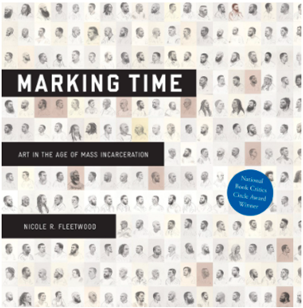 Fleetwood, Nicole R. Marking Time: Art in the Age of Mass Incarceration. Cambridge, MA: Harvard University Press, 2020.
Fleetwood, Nicole R. Marking Time: Art in the Age of Mass Incarceration. Cambridge, MA: Harvard University Press, 2020.
 Gonzalez, Aston. Visualizing Equality: African American Rights and Visual Culture in the Nineteenth Century. John Hope Franklin Series in African American History and Culture. Chapel Hill: University of North Carolina Press, 2020.
Gonzalez, Aston. Visualizing Equality: African American Rights and Visual Culture in the Nineteenth Century. John Hope Franklin Series in African American History and Culture. Chapel Hill: University of North Carolina Press, 2020.
 Hank Willis Thomas: All Things Being Equal . . . New York and Portland, OR: Aperture Foundation in association with Portland Art Museum, 2018.
Hank Willis Thomas: All Things Being Equal . . . New York and Portland, OR: Aperture Foundation in association with Portland Art Museum, 2018.
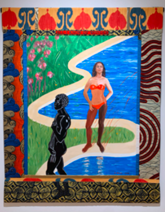 Harris, Shawnya L.,editor. Emma Amos: Color Odyssey. Athens: Georgia Museum of Art, University of Georgia, 2021.
Harris, Shawnya L.,editor. Emma Amos: Color Odyssey. Athens: Georgia Museum of Art, University of Georgia, 2021.
Emma Amos, All I Know of Wonder, 2008, oil on linen, African fabric, 70 1/2 x 55 1/2 in. (179.1 x 141 cm), installation view, Emma Amos: Color Odyssey, Georgia Museum of Art, University of Georgia, Athens, 2021 (photograph by the author)
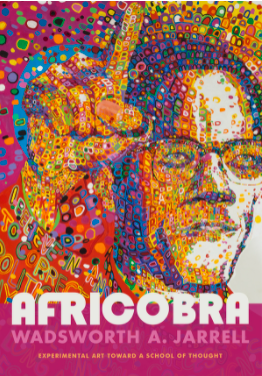 Jarrell, Wadsworth A. AFRICOBRA: Experimental Art toward a School of Thought. Durham, NC: Duke University Press, 2020.
Jarrell, Wadsworth A. AFRICOBRA: Experimental Art toward a School of Thought. Durham, NC: Duke University Press, 2020.
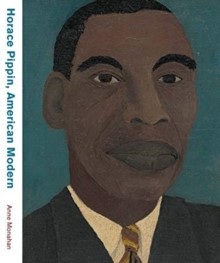 Monahan, Anne. Horace Pippin, American Modern. New Haven, CT: Yale University Press, 2020.
Monahan, Anne. Horace Pippin, American Modern. New Haven, CT: Yale University Press, 2020.
Mühling, Matthias and Stephanie Weber, editors. Senga Nengudi: Topologies. Munich: Hirmer, 2021.
Senga Nengudi, Warp Trance, 2007, multi-channel audio/video installation in collaboration with the Fabric Workshop and Museum, Philadelphia, with a sound composition by Butch Morris, installation view, Senga Nengudi: Topologies, Philadelphia Museum of Art, 2021 (photograph © Aaron Igler, provided by the artist and The Fabric Workshop and Museum)
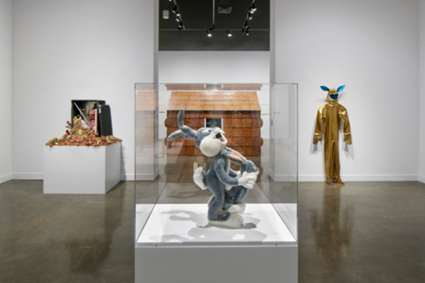 No Wrong Holes: Thirty Years of Nayland Blake. Los Angeles and Cambridge, MA: Institute of Contemporary Art and MIT List Visual Arts Center (online), 2020.
No Wrong Holes: Thirty Years of Nayland Blake. Los Angeles and Cambridge, MA: Institute of Contemporary Art and MIT List Visual Arts Center (online), 2020.
No Wrong Holes: Thirty Years of Nayland Blake, installation view, MIT List Visual Arts Center, Cambridge, MA, 2020–21 (photograph © Charles Mayer, provided by MIT List Visual Arts Center)
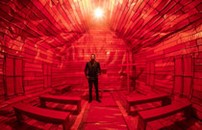 Oliver, Valerie Cassel. The Dirty South: Contemporary Art, Material Culture, and the Sonic Impulse. Richmond, VA and Durham, NC: Virginia Museum of Fine Arts in association with Duke University Press, 2021.
Oliver, Valerie Cassel. The Dirty South: Contemporary Art, Material Culture, and the Sonic Impulse. Richmond, VA and Durham, NC: Virginia Museum of Fine Arts in association with Duke University Press, 2021.
Rodney McMillian, Asterisks in Dockery (Blues for Smoke), 2021, vinyl, thread, wood, paint, lightbulb, installation view, The Dirty South: Contemporary Art, Material Culture, and the Sonic Impulse, Virginia Museum of Fine Arts, 2021 (photograph © Sandra Sellars, provided by Virginia Museum of Fine Arts)
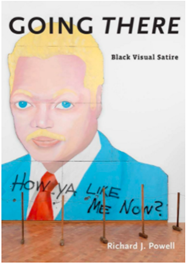 Powell, Richard J. Going There: Black Visual Satire. Cambridge, MA and New Haven, CT: Hutchins Center for African & African American Research in association with Yale University Press, 2020.
Powell, Richard J. Going There: Black Visual Satire. Cambridge, MA and New Haven, CT: Hutchins Center for African & African American Research in association with Yale University Press, 2020.
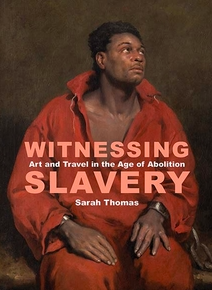 Thomas, Sarah. Witnessing Slavery: Art and Travel in the Age of Abolition. London and New Haven: Paul Mellon Centre for Studies in British Art in association with Yale University Press, 2019.
Thomas, Sarah. Witnessing Slavery: Art and Travel in the Age of Abolition. London and New Haven: Paul Mellon Centre for Studies in British Art in association with Yale University Press, 2019.
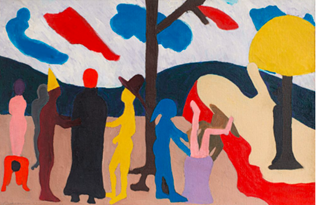 Tuite, Diana, editor. Bob Thompson: This House Is Mine. Waterville, ME and New Haven, CT: Colby College Museum of Art in association with Yale University Press, 2021.
Tuite, Diana, editor. Bob Thompson: This House Is Mine. Waterville, ME and New Haven, CT: Colby College Museum of Art in association with Yale University Press, 2021.
Bob Thompson, The Snook (The Sack), 1961, oil on canvas, 23 1/2 x 36 in. (59.7 x 91.4 cm). Collection of Andrew Nelson (© Michael Rosenfeld Gallery LLC, New York)
VanDiver, Rebecca. Designing a New Tradition: Loïs Mailou Jones and the Aesthetics of Blackness. University Park, PA: Penn State University Press, 2020.
Digital Humanities at the 110th Annual Conference
posted by CAA — Feb 03, 2022

The upcoming Annual Conference this winter and spring will feature a number of sessions that discuss issues related to the digital humanities and art. See below for links to explore sessions that relate to these topics in the conference schedule.
See the rest of this year’s conference schedule online! Register for CAA’s upcoming conference and learn more at our registration page. After you register, sign into the app and create your own custom schedule using the tools and filtering options on the side (switch time zones in the upper left of the app: CST for in-person and your own time zone for virtual).
Sessions on Digital Humanities
Critical Cataloging Conversations in Teaching, Research, and Practice
VISUAL RESOURCES ASSOCIATION (VRA)
Friday, February 18, 2022
11:00 a.m. – 12:30 p.m. CST (12:00 p.m. – 1:30 p.m. EST)
Bridget Madden, University of Chicago
Dismantling the Patriarchal Canon: Foregrounding Women Artists and Patrons through Digital Art History
DIGITAL ART HISTORY SOCIETY
Friday, March 4, 2022
11:00 a.m. – 12:30 p.m. CST (12:00 p.m. – 1:30 p.m. EST)
Tracy Chapman Hamilton
Dana Hogan, Duke University
Mariah Proctor-Tiffany, California State University, Long Beach
Archival Imaginaries and Futurities in Contemporary Art from SWANA
Saturday, February 19, 2022
4:30 p.m. – 6:00 p.m. CST (5:30 p.m. – 7:00 p.m. EST)
Lara Fresko Madra, Cornell University
Kareem Estefan, Brown University
New frontiers: creating, collecting, preserving and displaying digital based art of Russia and Eastern Europe
Saturday, February 19, 2022
4:30 p.m. – 6:00 p.m. CST (5:30 p.m. – 7:00 p.m. EST)
Natalia Kolodzei, Kolodzei Art Foundation
The Living Catalogue Raisonné
CATALOGUE RAISONNÉ SCHOLARS ASSOCIATION
Saturday, February 19, 2022
9:00 a.m.– 10:30 a.m. CST (10:00 a.m. – 11:30 a.m. EST)
Joan Pachner
Marin R Sullivan, Sculptural Things
Digital Realms in Practice
Thursday, February 17, 2022
4:30 p.m.- 6:00 p.m. CST (5:30 p.m. – 7:00 p.m. EST)
Diverse Resources for New Media
Thursday, February 17, 2022
4:30 p.m.- 6:00 p.m. CST (5:30 p.m. – 7:00 p.m. EST)
Nadav Assor, Connecticut College
New frontiers: creating, collecting, preserving and displaying digital based art of Russia and Eastern Europe
Saturday, February 19, 2022
4:30 p.m.- 6:00 p.m. CST (5:30 p.m. – 7:00 p.m. EST)
Natalia Kolodzei
Kolodzei Art Foundation
Making Media Social: An Examination of Video and Television in the History of Political Activism of the 1970s
Thursday, February 17, 2022
9:00 a.m.– 10:30 a.m. CST (10:00 a.m. – 11:30 a.m. EST)
Corinna Kirsch, Stony Brook University
Brock Lownes, Stony Brook University
The Problem of Mapping Social Justice On The Social (Creative) Body In an Era Of NFT’s
Saturday, March 5, 2022
11:00 a.m. – 12:30 p.m. CST (12:00 p.m. – 1:30 p.m. EST)
Gale Elston, CUNY
(inappropriate) digital intimacies
Saturday, March 5, 2022
2:30 p.m. – 4:00 p.m. CST (3:30 p.m. – 5 p.m. EST)
Francesca Balboni, University of Texas at Austin
Meet the 2022 CAA Annual Conference Support Grant Recipients
posted by CAA — Feb 03, 2022
CAA offers Annual Conference support grants to graduate students in art history and to international artists and scholars. Meet this year’s recipients of our named support grants and find information about their presentations at the conference and their corresponding session below. Dozens of other support grants were given to CAA members through the Presidents Council of CAA and the “Pay it Forward” initiative.
CAA TRAVEL GRANT IN MEMORY OF ARCHIBALD CASON EDWARDS, SENIOR, AND SARAH STANLEY GORDON EDWARDS
The CAA Support Grant in Memory of Archibald Cason Edwards, Senior, and Sarah Stanley Gordon Edwards was made possible by Mary D. Edwards. The grant supports women who are emerging scholars at either an advanced stage of pursuing a doctoral degree or who have received their PhD within the two years prior to the submission of the application.
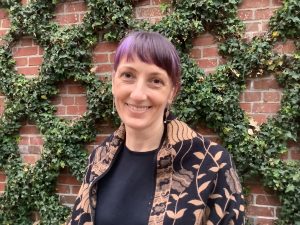
Kristan Hanson, Dumbarton Oaks
Presentation at the Annual Conference: “Nurturing Growth: Eva Gonzalès’s La Plante favorite and Berthe Morisot’s Fillette aux jacinthes”
Session: Enchanted by Nature: Picturing Gendered Plants and Female Agency in Europe and China (17th – 19th Century)
Kristan M. Hanson is an art historian and plant humanist. Her research examines the historical significance of individual plants and botanical forms in art to deepen understandings of human/plant interactions and anthropogenic environmental change. She currently holds a consultancy as Managing Digital Editor for the Plant Humanities Initiative at Dumbarton Oaks, prior to which she was a 2020–2021 academic year fellow. Hanson has also received fellowships and awards to support her research from the Oak Spring Garden Foundation, HASTAC Scholars program, Hall Center for the Humanities, and Institute for Digital Research in the Humanities.
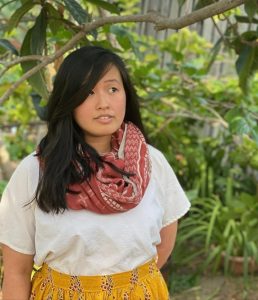
Cynthia Kok, Yale University
Presentation at the Annual Conference: “’Een bloempoth van parlemoer’: Painting Life in Dirck van Rijswijck’s Mother-of-Pearl Floral Panels”
Session: Analogous Matter: Skeuomorphism as Method
Cynthia Kok is a Ph.D. candidate at Yale University. Her dissertation focuses on sensorial engagement in making and craft experiments with mother-of-pearl in the early modern Dutch world. Cynthia received her MA from Bard Graduate Center and her BA from the University of California, Berkeley. She has held curatorial internships at the Metropolitan Museum of Art’s Costume Institute, the Frick Collection, and the Smithsonian American Art Museum and she is the 2021-2023 Kress History of Art Institutional Fellow at the Leiden University Centre for the Arts in Society (LUCAS).
Honorable Mention:
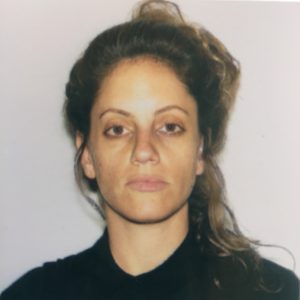
Shoghig Halajian, University of California San Diego
Presentation at the Annual Conference: “Destroying the Form: On the Spatial Politics of Rafa Esparza’s bust: A Mediation on Freedom”
Session: Monumentality in Art: Memory, History, and Impermanence in Diaspora
Shoghig Halajian is a curator and art historian, who serves on the Board of Directors at Human Resources LA and was previously Assistant Director at LACE (Los Angeles Contemporary Exhibitions). She is co-editor of the online journal Georgia, in collaboration with Anthony Carfello and Suzy Halajian, which is supported by a Creative Capital | Andy Warhol Foundation Arts Writers Grant. She has presented projects at the Hammer Museum and the ONE Archives at USC Libraries in Los Angeles; Le Magasin–National Center for Contemporary Art in Grenoble; Al Ma’mal Foundation for Art in Jerusalem, UKS in Oslo, among others. She was a 2021 Research Fellow at Ocean Space–TBA 21 in Venice. She is a Ph.D. candidate in Art History, Theory and Criticism with a Critical Gender Studies emphasis at University of California, San Diego, where her research explores contemporary queer aesthetics and performance through a critical race lens, focusing on artistic experiments with collaboration.
SAMUEL H. KRESS FOUNDATION CAA CONFERENCE SUPPORT FELLOWSHIP FOR INTERNATIONAL SCHOLARS
Recognizing the value of the international exchange of ideas and experience among art historians, the Kress Foundation is offering support for international scholars participating as speakers at the 2022 CAA Annual Conference. The scholarly focus of the papers must be European art before 1830.
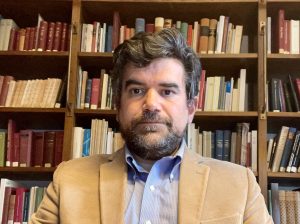
Lorenzo Vigotti, Kunsthistorisches Institut in Florenz
Presentation at the Annual Conference: “Diplomatic Exchanges and Architectural Inventions along the Silk Road: The Case of Soltaniyeh and Santa Maria del Fiore”
Session: Beyond the Silk Road
Lorenzo is a trained architect with a M. Arch. from the University of Florence, Italy, and a Ph.D. in architectural history from Columbia University with a dissertation on the origin of the Renaissance palace. He is currently a post-doc at the Kunsthistorisches Institut in Florence, where he studies the shift in spatial organization in domestic residences between the 14th and the 15th century, with an emphasis on early collecting practices and the birth of the studiolo as a manifestation of power by the urban oligarchy. Together with Shahid Beheshti University in Tehran, Iran, Lorenzo is exploring the circulation of architectural knowledge between medieval Persia and Italy, specifically the materiality and the problems of preservation of brick dome structures. Finally, he oversees the virtual reconstruction of the now lost Florentine ghetto at the Medici Archive Project.
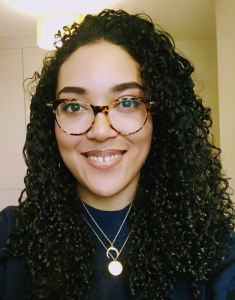
Ana Cristina Howie, University of Cambridge
Presentation at the Annual Conference: “’Favoured Black Attendants’ in ‘Splendid State Portraits’? Genoese merchants, Flemish painters, and the Spanish Atlantic Slave Trade”
Session: Archive, Object, Image: Reading Against the Grain in the Dutch and Spanish “Golden Ages”
Ana is originally from New Zealand and completed her bachelor’s degree in the History of Art and French at the University of Auckland. She continued her studies at the Université Paris-Sorbonne, then earned her MA in the History of Art at the Courtauld Institute in London, specializing in early modern Netherlandish artistic production. She began her PhD under the supervision of Professor Ulinka Rublack at the University of Cambridge in 2019, funded by the Prince of Wales International Scholarship. Her doctoral research investigates the relationships between women, dress, and portraiture in seventeenth-century Genoa, with a focus on the oeuvres of Flemish painters Peter Paul Rubens and Antony van Dyck. She is the recipient of the inaugural Society for Renaissance Studies/British School in Rome Residential Doctoral Research Scholarship for 2021/22. Her work and projects have been supported by the Royal Historical Society, Centre for Research in the Arts, Social Sciences and Humanities, Magdalene College, Cambridge, and the Cambridge Trust.
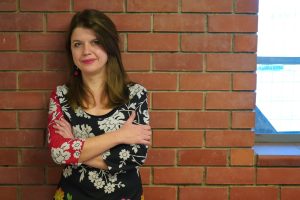
Iro Katsaridou, Museum of Byzantine Culture, Thessaloniki, Greece
Presentation at the Annual Conference: “Through Foreign Eyes: Curating the 1821 Greek War of Independence”
Session: Instrumentalizing Memory and the Politics of Commemoration
Iro Katsaridou was recently (2021) appointed Director of the Thessaloniki Museum of Photography, Greece. Previously, she has worked as curator of modern and contemporary art at the Museum of Byzantine Culture in Thessaloniki. She studied art history at the Aristotle University of Thessaloniki and the Université Paris I-Sorbonne, and also pursued museum studies at the City University of New York. Her doctoral dissertation (Aristotle University, 2010) focused on contemporary Greek photography. Iro has researched photography and art in wartime (World War I and II), curated exhibitions and edited related catalogues in this particular field. More recently (2021) she has curated an exhibition at the Museum of Byzantine Culture on the aspects of Philhellenic movements in art and the Greek War of Independence. She has taught as adjunct faculty at several Greek universities. She has co-edited two books on photography during the Nazi Occupation of Greece (1941-1944), one on the art of World War I in Greece, and written articles and book chapters on photography, museum policies, as well as the relationship between contemporary Greek art and politics. She has presented her research in international conferences, while in 2019 and 2020 she participated in the CAA-Getty International Program.
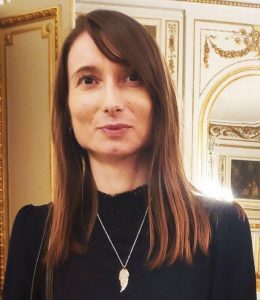
Jana Kantoříková, Sorbonne University/CNRS
Presentation at the Annual Conference: “Crucified Women: The Way of the Cross in the Symbolist Movement”
Session: Women in Art in the second part of the 19th century-early part of the 20th
Jana Kantoříková is an associated researcher at the Center of Interdisciplinary Research on Central, Eastern and Balkanic Europe at Sorbonne University/CNRS. She received her PhD in Slavic Philology, History of Czech Literature and Literary Theory at the Charles University in Prague and the University of Regensburg (2018). She taught at the University of Passau (Germany) and the Sorbonne University. Her research focuses on European modernisms and cultural transfers between France, Germany and the Czech lands, for example “Horror Fragmenti in Czech Symbolism” in Angst, Anxiety, Anguish in Fin de Siècle Art and Literature (Cambridge Scholars Publishing, 2020) or “Le Cycle de la volupté et de la mort : ‘livre empoisonné’ et ornementation du péché” in L’art (décoratif) du livre fin-de-siècle: éloge du parergon (Éditions Otrante, 2021). She is currently working on projects related to the reception of Friedrich Nietzsche in Central Europe and the blackness imagery in the Czech lands in the 19th century.
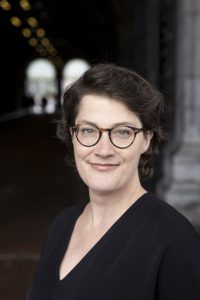
Judith Noorman, University of Amsterdam
Presentation: “The Invisibility Myth. Women, Art and Household Consumption in the Dutch Republic”
Session at the Annual Conference: Archive, Object, Image: Reading Against the Grain in the Dutch and Spanish “Golden Ages”
Judith Noorman is Assistant Professor of Art History in the Early Modern Period and Director of the Amsterdam Centre for Studies in Early Modernity (both at the University of Amsterdam). As of September 2021, she is leading a governmentally funded NWO VIDI project: The Female Impact. Women, Art and Household Consumption in the Dutch Republic, 1580-1720. She earned her PhD at the Institute of Fine Arts, New York University and has conducted postdoctoral research at the Drawing Institute, Morgan Library & Museum. At the 110th CAA Annual Conference, she is presenting a paper on The Invisibility Myth. Women, Art and Household Consumption in the Dutch Republic, as part of the HNA-sponsored session Archive, Object, Image: Reading Against the Grain in the Dutch and Spanish “Golden Ages”, which is chaired by Carrie J. Anderson and Marsely Kehoe.
CAA-GETTY INTERNATIONAL PROGRAM
Every year since 2012, the CAA-Getty International Program has enabled art historians, museum curators, and artists who teach art history to attend CAA’s Annual Conference. This program is funded on an annual basis by the Getty Foundation. Meet the CAA-Getty International Program participants here.
Black History Month and the 110th Annual Conference
posted by CAA — Jan 31, 2022
Each week this Black History Month, we highlight the rich scholarship and programs produced at CAA that celebrate, recognize, and interrogate Black art, history, and experience. This week, we look forward to the research and scholarship that will be presented virtually at the upcoming Annual Conference. Many sessions feature talks that look at or investigate Blackness, racism, colonialism, neo-colonialism, and slavery, Black identity, theory of race, Afrofuturism, queerness, the African diaspora, and intersections between these topics.
In chronological order:
February 17-19:
Reimagining the Past alongside Black Women Artists, Thursday, February 17, 2022, 9:00 – 10:30 a.m. CST (10:00 – 11:30 a.m. EST)
Latinx Bodies: Presence/absence and representation (Part 1) , Thursday, February 17, 2022, 9:00 – 10:30 a.m. CST (10:00 – 11:30 a.m. EST)
To See, to Keep, to Know: Photography and Intergenerational Knowledge Production, Thursday, February 17, 2022, 11:00 – 12:30 p.m. CST (12:00 – 1:30 p.m. EST)
Archive, Object, Image: Reading Against the Grain in the Dutch and Spanish “Golden Ages,” , Thursday, February 17, 2022, 11:00 – 12:30 p.m. CST (12:00 – 1:30 p.m. EST)
U.S. Latinx Art, Pre-1950 ,Thursday, February 17, 2022, 11:00 – 12:30 p.m. CST (12:00 – 1:30 p.m. EST)
Latinx Bodies: Presence/Absence and Representation (Part 2) , Thursday, February 17, 2022, 2:30 – 4:00 p.m. CST (3:30 – 5:00 p.m. EST)
Haunting and Memory in Arts of Africa and the African Diaspora , Friday, February 18, 2022, 9:00 – 10:30 a.m. CST (10:00 – 11:30 a.m. EST)
The air we breathe: aesthetics and politics of the breath in transpacific and transatlantic visual cultures ,Friday, February 18, 2022, 9:00 – 10:30 a.m. CST (10:00 – 11:30 a.m. EST)
Flipping the Script , Friday, February 18, 2022, 2:30 – 4:00 p.m. CST (3:30 – 5:00 p.m. EST)
(re)activation of Exhibitions as sites of contestation, Friday, February 18, 2022, 4:30 – 6:00 p.m. CST (5:30 – 7:00 p.m. EST)
Decolonial Teaching Methodologies in Digital Arts & Design, Saturday, February 19, 2022, 9:00 – 10:30 a.m. CST (10:00 – 11:30 a.m. EST)
What’s the “matter” with American Sculpture?, Saturday, February 19, 2022, 9:00 – 10:30 a.m. CST (10:00 – 11:30 a.m. EST)
Signs o’ the Times: Music and Politics in Contemporary Art ,Saturday, February 19, 2022, 9:00 – 10:30 a.m. CST (10:00 – 11:30 a.m. EST)
The Price of Blackness: African American art and visual culture in the first two decades of the Twenty-First Century, Saturday, February 19, 2022, 11:00 – 12:30 p.m. CST (11:00 – 12:30 p.m. EST)
Knowing People: Black Practices in Queer Collaborations, Saturday, February 19, 2022, 2:30 – 4:00 p.m. CST (3:30 – 5:00 p.m. EST)
‘Heresies’ and Other Mythologies, Saturday, February 19, 2022, 2:30 – 4:00 p.m. CST (3:30 – 5:00 p.m. EST)
Signs o’ the Times: Music and Politics in Contemporary Art, Part II ,Saturday, February 19, 2022, 2:30 – 4:00 p.m. CST (3:30 – 5:00 p.m. EST)
Toward an Inclusive Methodology: Experiments in Art Writing,Saturday, February 19, 2022, 4:30 – 6:00 p.m. CST (5:30 – 7:00 p.m. EST)
March 3-5
Women in Architecture: The African Exchange,Thursday, March 3, 2022, 9:00 – 10:30 a.m. CST (10:00 – 11:30 a.m. EST)
The Promise of Modern Art and Design: Cold War-Era Art and Diplomacy,Thursday, March 3, 2022, 9:00 – 10:30 a.m. CST (10:00 – 11:30 a.m. EST)
DESIGN INCUBATION COLLOQUIUM 8.2: RECENT RESEARCH IN COMMUNICATION DESIGN , Thursday, March 3, 2022,9:00 – 10:30 a.m. CST (10:00 – 11:30 a.m. EST)
Blackness and the Ashcan School, Thursday, March 3, 2022, 2:30 – 4:00 p.m. CST (3:30 – 5:00 p.m. EST)
Carnival in Africa, Friday, March 4, 2022, 9:00 – 10:30 a.m. CST (10:00 – 11:30 a.m. EST)
Curatorial Care: Feminist and Queer Practices ,Friday, March 4, 2022,9:00 – 10:30 a.m. CST (10:00 – 11:30 a.m. EST
Reading Kerry James Marshall’s ‘Rythm Mastr’, Friday, March 4, 2022, 11:00 – 12:30 p.m. CST (12:00 – 1:30 p.m. EST)
Transnational, Transcultural, Transversal: On the Decolonial Discourse of Art,Friday, March 4, 2022, 11:00 – 12:30 p.m. CST (12:00 – 1:30 p.m. EST)
Black Collage, Friday, March 4, 2022, 2:30 – 4:00 p.m. CST (3:30 – 5:00 p.m. EST)
Abolitionist Aesthetics, Friday, March 4, 2022, 4:30 – 6:00 p.m. CST (5:30 – 7:00 p.m. EST)
Art History and Social Justice in Practice ,Friday, March 4, 2022,4:30 – 6:00 p.m. CST (5:30 – 7:00 p.m. EST)
Activist Exhibitions, Friday, March 4, 2022, 4:30 – 6:00 p.m. CST (5:30 – 7:00 p.m. EST)
On Afro-pessimism and Its Alternatives ,Saturday, March 5, 2022, 9:00 – 10:30 a.m. CST (10:00 – 11:30 a.m. EST)
Reconsidering Art History Through Access ,Saturday, March 5, 2022, 9:00 – 10:30 a.m. CST (10:00 – 11:30 a.m. EST)
New Perspectives in Art, Design, and Art History: Supporting and Showcasing Emerging Voices from Marginalized Communities ,Saturday, March 5, 2022, 2:30 – 4:00 p.m. CST (3:30 – 5:00 p.m. EST)
New Ways of Seeing ,Saturday, March 5, 2022, 2:30 – 4:00 p.m. CST (3:30 – 5:00 p.m. EST)
Botanical Intimacies: Colonialism, Decolonial Practice, and Queered Ecologies , Saturday, March 5, 2022,4:30 – 6:00 p.m. CST (5:30 – 7:00 p.m. EST)
CAA 2022 Awards for Distinction
posted by CAA — Jan 24, 2022
CAA announces the 2022 recipients of Awards for Distinction. By honoring outstanding member achievements, CAA reaffirms its mission to encourage the highest standards of scholarship, practice, connoisseurship, and teaching in the arts. With these annual awards, CAA seeks to honor individual artists, art historians, authors, museum professionals, and critics whose accomplishments transcend their individual disciplines and contribute to the profession as a whole and to the world at large.
Among the awards, the Distinguished Artist Award for Lifetime Achievement is presented to Betye Saar who has not only forged a singular practice for six decades but has also influenced generations of artists, makers, and thinkers. Calling upon the legacies of artists like Joseph Cornell, her symbolic and potent assemblages, of which she’s best known, reflect on the lives, experiences, and identities of African Americans, spirituality, and cultural connectivity.
The Distinguished Lifetime Achievement Award for Writing on Art is presented to Wu Hung. Perpetually interested in the shape of time, in relation to the time of the world, he has authored many books, essays, and exhibition catalogues that bring Chinese visual culture into different orders of focus, taking into account the changing conditions of tombs, screens, performances, and protests. The scope of his work has an epic quality, allowing arguments to unfold across centuries without losing sight of the very human presence of artists and audiences.
Art Journal Award
Alfred H. Barr Jr. Award
Alfred H. Barr Jr. Award for Smaller Museums, Libraries, Collections, and Exhibitions
Frank Jewett Mather Award
Charles Rufus Morey Book Award
Elina Gertsman, The Absent Image: Lacunae in Medieval Books, Penn State University Press, 2021.
Arthur Kingsley Porter Prize
Artist Award for a Distinguished Body of Work
Kent Monkman
CAA/AIC Award for Distinction in Scholarship and Conservation
Zahira Véliz
Distinguished Artist Award for Lifetime Achievement
Betye Saar
Distinguished Lifetime Achievement Award for Writing on Art
Wu Hung
Distinguished Feminist Award – Artist
In lieu of the Distinguished Feminist awards, we will recognize leaders in the field of feminist art and art history in our 2022 programming highlighting the 50th Year Anniversary of feminism at CAA.
Distinguished Feminist Award – Scholar
In lieu of the Distinguished Feminist awards, we will recognize leaders in the field of feminist art and art history in our 2022 programming highlighting the 50th Year Anniversary of feminism at CAA.
Distinguished Teaching of Art Award
Fred Hagstrom
Distinguished Teaching of Art History Award
Terry Smith
Excellence in Diversity Award
Citations:
Art Journal Award
In organizing a course of study predicated on the ontological challenge to discourses of art offered by trans and nonbinary positions, David J. Getsy and Che Gossett have generously identified a major lacuna in the field and provided a toolkit for its amelioration. The jury unanimously selected their “A Syllabus on Transgender and Nonbinary Methods for Art and Art History” as the most distinguished contribution to the Art Journal in 2021. The syllabus not only identifies, positions, and summarizes critical scholarship in the field of transgender and nonbinary studies, it also demonstrates the fruitful integration of pedagogy and emerging research methodologies. Noting the relative dearth of art historical scholarship that has taken up trans methods and histories, the authors suggest the ways in which key themes and terms from art might be critically reevaluated in light of transgender studies. An introduction to each section’s bibliography synthesizes complex debates and individual arguments with remarkable clarity. Sensitive to the necessary intersections of trans analytics with critical approaches to race, ability, and class, the authors highlight readings from Black feminist thought and abolition optics, among other transversal concerns, that elucidate points of fracture within and strategies of resistance to the regulatory gender binary. At once rigorous and accessible, Getsy and Gossett’s contribution offers an adaptable blueprint for researchers and educators.
Committee:
Omar Kholeif, Sharjah Art Foundation
Tilo Riefenstein, School of the Arts, York St John University
Phil Taylor, George Eastman Museum (Chair)
Alfred H. Barr Jr. Award
America is haunted. Genocidal policies unleashed on Native Americans; the horror of the transatlantic slave trade; war, racism, and social injustice; dark passages in community and individual histories – these traumas and more have left behind a trail of spirits. Taking as its topic the paranormal in American art, Supernatural America reveals the myriad ways in which citizens and artists have sought to see, understand, or come to terms with the ghosts of the past. Lavishly illustrated, with many images never seen before, Supernatural America breaks new ground in presenting the paranormal as a historical subject of wide-ranging importance. Incisive essays by scholars and artists cover painting and sculpture from the late 18th century to the present, spirit photography, art channeled through mediums, spiritualist paraphernalia, folk and outsider art, UFO-inspired materials, video and installation from a range of perspectives. This revealing, thought-provoking investigation into an emerging scholarly field gives proof to William Faulkner’s well-known line: ‘The past is never dead. It’s not even past’.
Committee:
Susan Aberth, Bard College
Benjamin Anderson, Cornell
Karen Lang, University of Arizona
Andrew Saluti, Syracuse University (Chair)
Joyce Tsai, Clyfford Still Museum
Alfred H. Barr Jr. Award for Smaller Museums, Libraries, Collections, and Exhibitions
In 2015 the Ryerson Image Centre acquired the archives of Berenice Abbott, including more than 6000 photographs and 7000 negatives, her papers, correspondences, and manuscripts. One of the key figures in the history of documentary photography, Abbott is now known as an archivist as well as an artist. It was Abbott who preserved Eugene Atget’s archives at the end of the twenties and published his work. Her own photographs, taken while working for the WPA, consolidated her reputation as a documentary photographer. What exactly is that reputation? In order to answer that question, Documentary in Dispute meticulously reconstructs the manuscript of the book Changing New York, first published in 1939 by Dutton & Co, with photographs by Berenice Abbott and text by renowned art critic Elizabeth McCausland. In a tour de force of archival research and scholarly presentation, Sarah M. Miller reveals how the project was altered to obscure the aesthetic, political and ethical values of photographer and author. Miller’s beautifully written, highly focused essay on Abbott and McCausland situates them in an international avant-garde which recognized the potential of image and text to transform, even to break, our habits of seeing and being. Miller’s overall approach recalls Walter Benjamin’s own in the 1930s. Not coincidentally, Benjamin was inspired by Abbott’s archival and photographic achievements.
Committee:
Susan Aberth, Bard College
Benjamin Anderson, Cornell
Karen Lang, University of Arizona
Andrew Saluti, Syracuse University (Chair)
Joyce Tsai, Clyfford Still Museum
Frank Jewett Mather Award
The jury has unanimously selected Kaira M. Cabañas’ Immanent Vitalities: Meaning and Materiality in Modern and Contemporary Art. Cabañas has written a highly readable volume addressing the material relations between objects and subjects as well as addressing the limiting institutional conventions of academic art history. Her work draws upon theories of new materialism, an animating force that, when attended to, requires rethinking binary categories such as living and inert or life and matter. Cabañas’ volume traverses histories and hemispheres: from the perceptual doubts engendered by the force of color in Alejandro Otero’s paintings to the enmeshed material contingencies of Gego’s metal sculptures, from the sensorial therapeutic propositions of Lygia Clark’s relational objects to the curatorial entanglements of Alessandro Balteo-Yazbeck’s challenges to the grid, and from the affective agencies Mario Pedrosa located in the paintings of Djanira da Motta e Silva to the documented rituals of care obfuscating boundaries between the organic and the inorganic in Matheus Rocha Pitta’s Polaroids. Cabañas proposes an alternative to the kind of nation-bounded analyses that often burden studies of modern and contemporary art of Latin America. She addresses academic art history’s tendency to isolate along geographic lines, marginalizing practices and scholarship. Cabañas’ text thus models a critical strategy for assessing not just artworks but the field itself.
Committee:
Julia Bryan-Wilson, University of California, Berkeley
Kim Theriault, Dominican University
Andrew Wasserman, Dominican University (Chair)
Charles Rufus Morey Book Award
Elina Gertsman, The Absent Image: Lacunae in Medieval Books, Penn State University Press, 2021.
Countering the customary interpretation of late medieval art as relentlessly profuse and exuberant, Elina Gertsman’s The Absent Image: Lacunae in Medieval Books, explores different constructions of emptiness ranging from the presentation of voids in illustrations to represent the unrepresentable to the deliberate inclusion of physical holes in manuscript pages designed to reveal portions of other pages. Gertsman’s investigation of the “fecundity of emptiness” is a generative and compelling topic for scholars of art history/visual studies across areas, both within and outside Medieval Studies. She argues and demonstrates that, between 1200s and 1500s, the broad circulation of scientific thought and its engagement with theology and formal and literary discourses on emptiness, absence, and negation account for visual, cognitive, and material expressions on the pages of medieval books. Cross-disciplinary in its approach, Gertsman’s book simultaneously draws attention to the visual and material aspects of the manuscripts, phenomenological experience, and philosophical, religious, and scientific theories of the period. In doing so she uncovers an unexpected kinship between the medieval artists and the modernist avant-garde, where the void is regarded as the locus of the sublime and of boundless possibility. Her erudite writing and compelling approach to the subject poses questions throughout that magnify the relevance of her study and stimulate personal inquiry—as a reader reflects on other areas of consideration across time called out in the text. The book is lavishly illustrated and artfully designed with a shape and size complementary to the subject of study.
Committee:
John Cunnally, Iowa State University
Christina Hellmich, Fine Arts Museums of San Francisco
Laura Anne Kalba, University of Minnesota
Lisa D. Schrenk, University of Arizona
Dorothy Wong, University of Virginia (Chair)
Arthur Kingsley Porter Prize
Marius Hauknes offers a riveting and multi-layered interpretation of the role of spectatorship in the production of meaning in the 13th-century crypt of the Anagni Cathedral. Rather than consider a viewer as a passive onlooker, he devotes attention to multiple aspects of embodied spectatorship: movement, (shifting) angles/perspectives, (in)visibility, temporality, and knowledge. These offer a powerful vantage point from which to consider the intersection of the painting program with the body itself. Drawing attention to contemporary concerns and interests in the body’s health, its cognitive capacities (and limits), and its place in the universe, Hauknes places the paintings into conversation with medicine and astrology. The images emerge as intellectual acts in a religious and political setting that grappled with problems of temporality and being. Hauknes evinces deep and extensive scholarly research, and is able to draw precise and appropriate insights from contemporary cultural and historical contexts, without losing focus on the artwork itself. While offering compelling readings of specific scenes — showing how they could connect, overlap, or echo with one another — Hauknes posits that comprehensive spectatorship was not possible. Instead, human comprehension and temporality contrasts with the divine, creating a space for reflection on the need for medicine and astrology.
Committee:
Nathan T. Arrington, Princeton University (Chair)
Susanna Berger, University of Southern California
Rachel Miller, California State University, Sacramento
Artist Award for a Distinguished Body of Work
Kent Monkman
There is a long-standing history in the visual arts of artists bearing witness to atrocities: Goya’s painting “The Third of May,” Picasso’s “Guernica,” to name but two. Toronto-based Cree artist Kent Monkman’s exhibition “Shame and Prejudice: A Story of Resilience” follows this tradition, with a few notable updates. On the occasion of Canada’s 150th anniversary in 2017, Monkman’s paintings featured in a cross-country touring exhibit that culminated at the University of British Columbia’s Museum of Anthropology, August 6, 2020 – January 3, 2021, provides a searing critique of Canada’s colonial policies past and present, including, in the artist’s accounting: “the signing of the numbered treaties, the reserve system, genocidal policies of the residential schools, mass incarceration and urban squalor.” This is a body of work that, though tackling a grim subject matter, is often a blend of subversive humor, fantasy, and homoeroticism. And, although appropriating the form of Western history painting, Monkman’s artwork breaks from tradition by subverting and de-centering the Western gaze and re-presenting a perspective of history from the vantage point of the Indigenous peoples. Albeit, a history filtered through the particular lens of an artist who identifies as both queer and two-spirit, and through his trickster alter-ego, Miss Chief Share Eagle Testickle, the protagonist within much of Monkman’s paintings and performances. Through his use of history painting, Monkman’s project is one that reminds us of the potency of images, and the potential of the artist to provoke and challenge history and its representations.
Committee:
Stephen Fakiyesi, Independent Artist, Toronto
Jessica Hong, Hood Museum, Toledo Art Museum
Beauvais Lyons, University of Tennessee, Knoxville, (Chair)
CAA/AIC Award for Distinction in Scholarship and Conservation
Zahira Véliz
Zahria (Soni) Véliz has enhanced our understanding of art through her numerous, scholarly publications to the fields of art history and paintings conservation. Dr. Véliz has strengthened the methodological approaches of scholars who work on Spanish artists and Franz Kline through her publication record as well as her generosity as a colleague.
Through the translation and dissemination of Spanish texts, Dr. Véliz’s has made contemporaneous information about early modern painting accessible to researchers who do not read Spanish. Artists Techniques in Golden Age Spain (1987) is often cited in technical studies of Spanish paintings. More recently, Dr. Véliz edited a translation of Jusepe Martínez’s 1673-75 Practical Discourses on the Most Noble Art of Painting (2017). These publications, along with others by Dr. Véliz on subjects including blue pigments, wooden panels, and drawing practice, have been foundational to the study of Spanish art in the United States.
Dr. Véliz’s PhD dissertation on Alonso Cano served as a foundation for many publications on the artist. In addition, Dr. Véliz’s knowledge and skills of connoisseurship regarding Spanish drawing enriched her drawings catalogues for the Courtauld Institute of Art in London and the Museo de Bellas Artes in Asturias. As Senior Paintings Conservator for the Museum of Fine Arts, Houston, Dr. Véliz published her research into a newly attributed painting to Diego Velázquez as well as technical and art historical research on Franz Kline’s paintings that are models of collaborative research.
Committee Members:
Jim Coddington, American Institute of Conservation
Tiarna Doherty, University of Delaware, (Chair)
Fernanda Valverde, Amon Carter Museum
Distinguished Artist Award for Lifetime Achievement
Betye Saar
Betye Saar (b. 1926, Los Angeles, CA) has not only forged a singular practice for six decades but has also influenced generations of artists, makers, and thinkers. Calling upon the legacies of artists like Joseph Cornell, her symbolic and potent assemblages, of which she’s best known, reflect on the lives, experiences, and identities of African Americans, spirituality, and cultural connectivity. Part of the broader Black Arts Movement in the 1970s, Saar also confronted issues of racism and sexism in groundbreaking and radical works like The Liberation of Aunt Jemima (1972). Saar contends the continual thread in her work is her “curiosity about the mystical.” As she wrote in 1998, “I am intrigued with combining the remnant of memories, fragments of relics and ordinary objects, with the components of technology. It’s a way of delving into the past and reaching into the future simultaneously. The art itself becomes the bridge. Curiosity about the unknown has no boundaries. Symbols, images, place and cultures merge. Time slips away. The stars, the cards, the mystic vigil may hold the answers. By shifting the point of view an inner spirit is released. Free to create.” By foregrounding the mystical, Saar sees people, cultures, contexts, temporalities as part of a larger, interconnected spiritual fabric, an understanding that is needed in a time of extreme ideological polarization, inequities, and geopolitical strife. Saar and her practice continue to resonate and inspire current generations and those to come.
Committee:
Stephen Fakiyesi, Independent Artist, Toronto
Jessica Hong, Hood Museum, Toledo Art Museum
Beauvais Lyons, University of Tennessee, Knoxville, (Chair)
Distinguished Lifetime Achievement Award for Writing on Art
Wu Hung
Trained in both China and the United States, Wu Hung’s writing brings perspectives native to both cultures to bear on aesthetics, art history, and archaeology. His arguments ground the cultures of China, from the earliest ancient survivals to the interventions of our own time in structures of mind that defy the progress narratives of the West. He has received countless awards for work that has transformed the study of East Asian art and drawn attention to the relationship between images and the spaces within which they are observed, from the Dunhuang caves to the double screens to Zhu Jinshi’s Fangzhen: A Cubic Meter of Canvas in Berlin.
Overall, his writings explore the many, restless transitions across time and space. Perpetually interested in the shape of time, in relation to the time of the world, he has authored many books, essays, and exhibition catalogues that bring Chinese visual culture into different orders of focus, taking into account the changing conditions of tombs, screens, performances, and protests. The scope of his work has an epic quality, allowing arguments to unfold across centuries without losing sight of the very human presence of artists and audiences. He works in the discipline of art history as a poet-scholar who knows the brushstroke from the inside out, crafting prose of great clarity and nuance that opens the field to specialists and new readers alike.
Distinguished Feminist Award – Artist
In lieu of the Distinguished Feminist awards, we will recognize leaders in the field of feminist art and art history in our 2022 programming highlighting the 50th Year Anniversary of feminism at CAA.
Committee:
Robin Cass, Rochester Institute of Technology (Chair)
Delinda J. Collier, School of the Art Institute of Chicago
Midori Yoshimoto, New Jersey City University
Distinguished Feminist Award – Scholar
In lieu of the Distinguished Feminist awards, we will recognize leaders in the field of feminist art and art history in our 2022 programming highlighting the 50th Year Anniversary of feminism at CAA.
Committee:
Robin Cass, Rochester Institute of Technology (Chair)
Delinda J. Collier, School of the Art Institute of Chicago
Midori Yoshimoto, New Jersey City University
Distinguished Teaching of Art Award
Fred Hagstrom
Fred Hagstrom, a member of the Carleton College faculty since 1984, is the 2022 recipient of the CAA Distinguished Teaching of Art Award. Hagstrom’s nomination included endorsements from former students and colleagues, including a listing of 341 former students who have taken his printmaking, book arts, and drawing classes. Hagstrom also directed a bi-annual study abroad 10-week trip for students to Australia, New Zealand, and the Cook Islands twelve times over twenty years, where students learned about South Pacific and Maori art and culture. Based on this experience, Dylan Yvonne Welch (BA, ‘08) recalls “Each trip, he candidly and humbly facilitates conversations about colonial history, racism and art. As a student, this was a breath of fresh air as I had found that many other professors seemed uncomfortable or simply avoided discussing those topics.” Eleanor Jensen (BA, ’01) credit him with teaching her to both see and draw, while also observing that “Fred is deeply sensitive to his students and is always ready to stand up for somebody who has been harmed or overlooked.” Students observed that Hagstrom’s classes were interdisciplinary, challenging them to connect their studies in other disciplines as well as their life stories to their studio work. Jade Hoyer credits Professor Hagstrom with being a mentor long after she graduated in 2007. Fred Hagstrom has profoundly impacted his students, many of whom have pursued careers as artists and educators. We are pleased to recognize Fred Hagstrom’s more than three decades of teaching with this award.
Committee:
Stephen Fakiyesi, Independent Artist, Toronto
Jessica Hong, Hood Museum, Toledo Art Museum
Beauvais Lyons, University of Tennessee, Knoxville, (Chair)
Distinguished Teaching of Art History Award
Terry Smith
Terry Smith has long written, curated and taught across borders, in the beginning coming from Australia to study and work in New York as both a scholar and an active member of Art & Language. He has been expanding his sights ever since. He has long advocated for the study of indigenous art. For the past twenty years, starting with projects such as Global Conceptualism: Points of Origin, 1950s -1980s at the Queens Museum, he was the trusted collaborator of Okwui Enwezor. He has always insisted that the past and the present be given their due consideration and global perspectives.
All of this came to his teaching. Students have understood the breadth of his expertise and curiosity; they have used them as inspiration for their own paths; they have appreciated his warmth, his encouragement and the gift of his time. The example he has set as an art historian and a curator has had visible effects in the ranks of university professors and museum curators in the United States and abroad. They do not conform to a single, theoretical way. His students repeatedly speak of his belief in the independent existence of the art object and at the same time his insistence that it be grounded and imbricated in its own real time social relations. Art is allowed its scale, its interior place in our minds, and its exterior place in our world.
Committee:
Shirin Fozi, University of Pittsburgh (Chair)
Joseph Masheck, Hofstra University
Molly Nesbit, Vassar College
Excellence in Diversity Award
Committee:
Carmelita Higgenbotham, Virginia Commonwealth University
Kelly Murdoch-Kitt, University of Michigan
Sohl Lee, Stony Brook University
In Memoriam: Jonathan Brown
posted by CAA — Jan 19, 2022
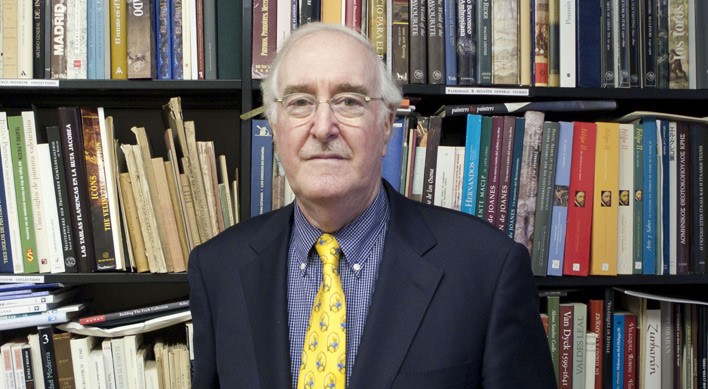
Image source: Institute of Fine Arts, New York University
CAA mourns the loss of Jonathan Brown, an art historian and curator who has had an immense impact on the study of art in the Hispanic world. With over fifty-one years of teaching, eight at Princeton and forty-three at the Institute of Fine Arts (IFA), Brown’s influence was far-reaching. As he put it, “Without modesty, I believe I have made a mark in my field—Hispanic art—and in the wider world of art history.”
As a student at the beginning of his career, Brown studied Spanish literature at Dartmouth College and studied abroad in Madrid, where he discovered and cultivated his lifelong interest in Velázquez and Spanish Baroque art. After finishing his doctorate at Princeton in 1964, he joined the Princeton Department of Art and Archeology from 1965–73 and then ultimately decided to pursue scholarship and teaching, publishing his first book in 1973 based on his dissertation, Images and Ideas in Seventeenth-Century Spanish Painting. He said that he was told “that it fell like a bombshell in the ranks of Spanish art historians. Implicitly, the book created a bridge between the iconographical approach of Panofsky and a contextual reading . . . ” This was just the start of a long career that included exhibitions at major museums, scholarly publications, awards, and other accomplishments. In his tenure, his work shaped the study of Spanish Baroque art and defined the practice of Velázquez, producing texts and surveys that have become standard references for the field. In the last decades of his life, as the Carroll and Milton Petrie Professor Emeritus of Fine Arts at the IFA, he expanded his practice to include Hispanic and colonial art in the Americas.
In 2011, Brown served as the Distinguished Scholar for CAA’s Annual Conference. This honor invites preeminent scholars in the field to participate in a session at the conference along colleagues and former students. The session can therefore be viewed as the equivalent of a living Festschrift: an occasion for applauding, examining, and extending a distinguished career in art history and an opportunity for encouraging dialogue between and among several generations of scholars. In recognizing the significance of this moment, he said that he had “received many awards for my contributions to the field, of which the most important is the Distinguished Scholar by the College Art Association . . .”
Read more about the remarkable career of Jonathan Brown here.
Fifty Years of Feminism at CAA
posted by CAA — Jan 14, 2022
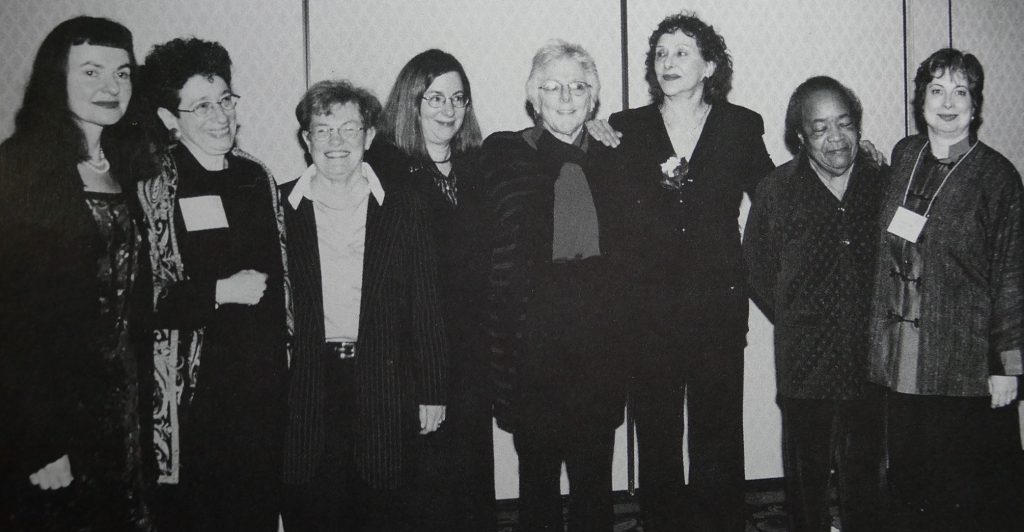
Recipients of the Committee on Women Awards, 2000 (left to right: Joanna Frueh, Flavia Rando, Mary D. Garrard, Norma Broude, Linda Nochlin, Carolee Schneemann, Samella Lewis, Ferris Olin). Photograph by Maria Politarhos.
Please join us in celebrating fifty years of feminism at CAA. We will share resources and perspectives on these histories throughout the year.
Fifty years ago in 1972, CAA founded its first committees devoted to women in the arts. A meeting of more than 250 women at the 60th Annual Conference titled “Meeting for Women Members of the College Art Association,” marked the starting point for the association’s focus on supporting and promoting the advancement of feminism in art. CAA’s board formalized its advocacy for women the same month by establishing the Committee on the Status of Women (COSW), the first committee to focus on women in CAA’s history. Linda Nochlin, who was on the CAA Board at the time, became its first chair followed by Ann Sutherland Harris in 1973.
The Women’s Caucus for Art (WCA) was also formed at CAA in 1972 in response to the Annual Conference, but in 1974, the WCA broke off from CAA to become its own independent nonprofit organization and rapidly increased its membership. Today, the WCA is a close affiliate of CAA, whose history is often intertwined with our own. The COSW was renamed the Committee on Women in the Arts (CWA) in 1996, and it continues to promote the recognition of women’s valuable contribution to the visual arts and to critical art-historical study; advocate for feminist scholarship and activism in art; develop partnerships with organizations with compatible missions; monitor the status of women in the visual-arts professions; provide historical and current resources on feminist issues; and support emerging artists and scholars in their careers. Notable individuals involved with this effort over the years have included award recipients, such as art historians Linda Nochlin, Norma Broude, and Mary Garrard, as well as artists Carolee Schneemann, Faith Ringgold, and Carrie Mae Weems.
The CWA’s session, “50th Anniversary of Committee on Women in the Arts: Looking Back, Moving Forward,” at CAA’s upcoming virtual Annual Conference will dive into this history. Taking place on February 18, 2022 from 11:00 a.m. – 12:30 p.m. CST, is chaired by Joanna P. Gardner-Huggett and includes a panel discussion with Judith K. Brodsky, Ferris Olin, Midori Yoshimoto, Carron P. Little, Kalliopi Minioudaki, and Zoë Charlton.
Women-centered content is also one of the main three content threads at the 110th Annual Conference. Check out these sessions here and register today to attend!
Meet the 2022 CAA-Getty International Program Participants
posted by CAA — Dec 22, 2021
We’re pleased to announce this year’s participants in the CAA-Getty International Program. Now in its eleventh year, this international program supported by the Getty Foundation will all twelve new participants and four alumni to participation in the 2022 Annual Conference. Learn more about the first ten years of the program in our online publication.
At a pre-conference colloquium, the new participants will discuss key issues in the international study of art history together with CAA-Getty alumni and US hosts. The program will delve into topics as postcolonial and Eurocentric legacies, interdisciplinary and transnational methodologies, and the intersection of politics and art history.
Alumni invited back to the 2022 conference will present in the session Can Art History Be Affective? Empathy, Emotion and the Art Historian, chaired by Getty alumni and International Committee members Nora Veszpremi and Cristian Nae, while also providing an intellectual and social link between new participants and our burgeoning group of CAA-Getty International Program alumni.
The goal of the CAA-Getty International Program is to increase international participation in CAA’s activities and the field of visual arts in academia, thereby expanding international networks and the exchange of ideas both during and after the conference. We look forward to welcoming the following participants.
2022 PARTICIPANTS IN THE CAA-GETTY INTERNATIONAL PROGRAM

Tatiana Muñoz Brenes is an art curator and researcher. She has combined the exercise of cultural management with Social Sciences by having degrees in Art History and Psychology, both from the University of Costa Rica. Her training has allowed her to work on the topics of community museums, sustainability, collection research, curating exhibitions and curatorial accompaniment for artistic production. Currently, her work focuses mainly on queer art and the LGBTIQ+ community in Latin America. In addition, she has extensive experience in international projects, lectures, publications and museum training in Scotland, Portugal, Spain, China, Japan, Ecuador, and other countries. Projects can be found at www.arthistorylady.com
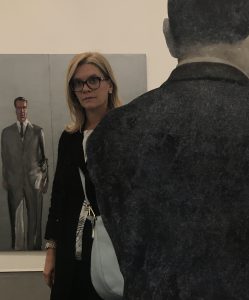
Simona Cupic is Professor at the Department of Art History, University of Belgrade, Serbia. Her fields of research and teaching include art and culture between the World Wars, and the 1950s and 1960s. She is particularly interested in the visual and popular culture between 1920s and 1960s. She is the author of Mona Lisa & Superman. John F. Kennedy and the New Frontier of the Culture (2016), Elain de Kooning. Portraits (with Brandon Brame Fortune, Ann Eden Gibson, 2015), The JFK Culture (edited volume, 2013), and Bourgeois Modernism and Popular Culture. Episodes of the Fashionable, Faddish and Modern (1918-1941) (2011), among others.
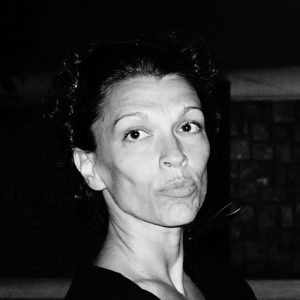
Anica Draganić is an architectural historian, conservator and multimedia artist who currently serves as an Associate Professor at the University of Novi Sad, Serbia. She received her PhD in Architectural History and Heritage Preservation from the University of Belgrade with a dissertation on Austro-Hungarian historical breweries. Her work focuses on nineteenth- and twentieth-century European architecture, with particular emphasis on industrial heritage and identity issues in the intercultural context of Central Europe. Her extensive research on the architectural heritage of the Vojvodina region has been published in journals, conference proceedings, and books, but also presented in numerous exhibitions. Her most recent book, Shadows and Silhouettes of Industrial Past of Vojvodina, shows the complexities of the socio-political context in which the industrial architecture of a specific multicultural region emerged, developed and disappeared. She is currently particularly interested in European architecture from the socialist period, exploring its historical values and contemporary potential.
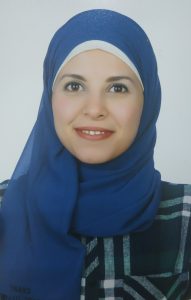
Heba Khairy Metwaly is an Exhibition coordinator at the Grand Egyptian Museum. She Oversees and provide rigorous, accurate and efficient exhibition coordination and follow up all aspects of exhibition development between all partners in the GEM. She is a PhD researcher specialized in the Collection Management and Documentation Practices in different museums. Heba has participated in many international and national field projects and studies focusing on the tangible and intangible material culture preservation and local community engagement and development. Heba has participated in the development of the daily life gallery “P34” at the Egyptian Museum of Cairo, the European Union Funding Project of Transforming the Egyptian Museum. In 2017 she participated in the British Museum International Training Program, where she curated the Object in Focus temporary exhibition. She Also participated in many international conferences focusing on the preservation of museum collection and exhibition design.

Roma Madan Soni is an art historian with a PhD from the University of Wolverhampton, an Assistant professor at Box Hill College Kuwait, an ecofeminist-artist, and a researcher. Her art, teaching, and research are interdisciplinary, positioned at the node of ecofeminism: practice, theory and history, and contemporary visual politics. Her articles are published in Journal of Visual Art Practice, Feminist Media Studies, Ecofeminism and Climate Change, Crafts Research, Art & The Public Sphere, Necsus, International Feminist Journal of Politics, Journal of Gender Studies, Swasti, and a chapter in Cambridge Scholars. She collaborated for conference presentations and conducted workshops at CAA, SVIMS-Pune, JNU, LSR, Raza Foundation, University of Wolverhampton, Kuwait-Nuqat, KISR, TEDx Global Day- Gulf University of Science and Technology, Dar Al Athar-Yarmouk, Kuwait University, American University of Kuwait, Box Hill College Kuwait, American Open University, UN Habitat and Beit Sadu. She has exhibited at Kunsthaus-Steffisburg, TAPRI-Finland, DarAlAthar AlIslamiyah, The Scientific Centre Kuwait, MOMA-Kuwait, Masaha13, Artsy, Mayinart, Artling, Saatchi galleries, and painted the book-cover for Routledge Handbook of Feminist Peace Research (2021). Research grants, commissions and awards from The Scientific Centre Kuwait, Kuwait Foundation of Advanced Sciences, Kuwait Institute of Scientific Research, UN Habitat, and Arab Open University aided her research and creations. She is a member of the Museum Committee and a Reader for the Council of Readers at CAA. I chair the “Transformative Education Think Tank”-Collective Impact Coalition-Konrad Adenauer Stiftung to address Kuwait’s academic challenges. Her work has been accepted at the Venice Art Fair and Florence Biennale 2021.
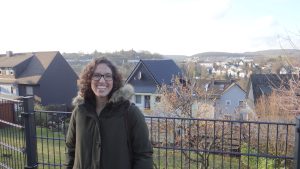
Patricia D. Meneses is an assistant professor of Art History at the University of Campinas (Brazil). She earned her PhD in History of the Visual Arts at the University of Pisa (2009). She is the author of Baccio Pontelli a Roma. L’attività dell’architetto per Giuliano Della Rovere (Felici Editore 2010) and editor of several books, such as Arte Não-Europeia. Conexões historiográficas a partir do Brasil (Esta ção Liberdade 2020), and A imagen como experimento. Debates contemporaneous sobre o olhar (Milfontes 2021). Recently, she was Hans Jonas visiting professor at the University of Siegen (2019), where she taught a course on “exotic” materials in Art History. She is currently part of a Connecting Art Histories project sponsored by the Getty Foundation (“Teaching Non-European at Brazilian Universities”). Her research focuses on the connections between art, science and ecology in the nineteenth-century. She is presently developing a book project about hummingbird’s ecology in Brazilian visual culture.
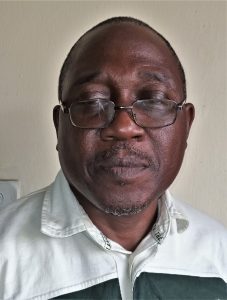
Akinwale Onipede is an art historian, researcher and teacher at the University of Lagos, Nigeria. He trained at the University of Benin, and, the University of Lagos, where he works in the area of the interface of global and local cultures and identities as expressed in visual arts. His main interest is in how developments globally in the philosophies, techniques, products and opportunities in visual arts, have affected its contemporary practice and direction in Nigeria. The universalization of cultures, consequent upon globalization, he argues, is skewed in favor of the West, whose culture is endorsed, whose pocket is deepest and whose machinery is most efficient, in the promotion of the direction of visual arts studies, practice, articulation and documentation. He is of the position that the continent that produced the great pyramids, the Nok, Igbo Ukwu, Ife and Benin masterpieces should play crucial roles in contemporary promotion of the arts.

Melissa M. Ramos Borges is an art historian with a predilection for the (re)vision of the discipline. She obtained her doctorate from the Programa de Estudios Artísticos, Literarios y Culturales with a specialty in Art History at the Universidad Autónoma of Madrid, where she presented the first comprehensive study of avant-garde art produced between 1960-1980 in Puerto Rico. She is a professor of Art History and Theory at the University of Puerto Rico, Mayagüez and Río Piedras Campus. In addition, she is an independent researcher and curator who has published and presented her exhibitions and articles in various international platforms. She curated SUZI FERRER, the first retrospective exhibition of the groundbreaking feminist avant-garde artist, presently on view at the Museo de Arte y Diseño de Miramar. She is currently working on publishing a catalogue with contributions from various scholars which will accompany an upcoming traveling SUZI FERRER exhibition.

Shenouda Rizkalla is a trained archaeologist with extensive experience in archaeological fieldwork, database and collections management, and community outreach. His current research focus is the museum’s role in preserving the local community identity, applied to the content and display of the Sharm El-Sheikh museum and build up a sustainable community outreach program by engaging the local population with the collection and relate the results to wider discussions of repatriation and post-colonial heritage management in Egypt. Rizkalla is an Egyptology PhD graduate from Helwan University-Egypt. His research to date has been diverse, working on recording and translating Ptolemaic Period hieroglyphics, creating and executing site management strategies, and addressing the looting of archaeological sites. He is a member of many excavations and site management missions inside Egypt since 2012. He has many Presentations and Invited Talks, Academic Reports and Publications.
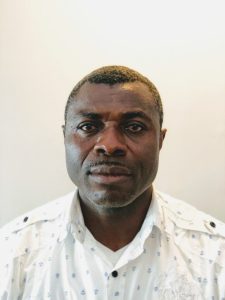
Nsima Stanislaus Udo is a Nigerian and an Africanist scholar. He completed his BA in History and International Relations in Ile-Ife, Nigeria. He then proceeded to South Africa where he completed his Honors and MA degrees (cum laude) at the University the Western Cape in Visual History and Theory. He lives in Cape Town and is a doctoral candidate at the University of the Western Cape. His research interest is in African cultural studies: in thinking around visual representations, histories and meanings of African cultural and festival practices. His doctoral research is currently looking at the history of Calabar Festival and Carnival, Nigeria. He is exploring the multiple-layered cultural, visual, aesthetic, economic and secular representations of this complex and elaborate festival. Nsima Stanislaus Udo presently serves as a teaching and research assistant at the Faculty of Art in the same university.
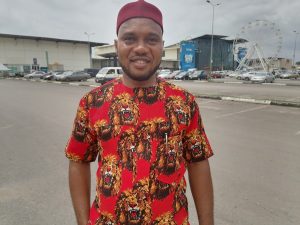
John Kelechi Ugwuanyi is a senior lecturer and the coordinator of postgraduate studies in the Department of Archaeology and Tourism, University of Nigeria, Nsukka. He had his PhD in heritage studies at the University of York and MA and BA in Archaeology and Tourism at the University of Nigeria. His research interest is critical heritage studies, museum, indigenous knowledge systems, tourism, and contemporary archaeology. He is the co-editor of Journal of African Cultural Heritage Studies and sits on the editorial board of the Studies in Contemporary and Historical Archaeology in Theory book series published by the Archaeopress in Oxford as part of the British Archaeological Report series of monograph. Kelechi has published in national and international journals of repute. He is a fellow of the American Council of Learned Societies and a recipient of other scholarship/grant including the Overseas Research Scholarship of the University of York, UK.
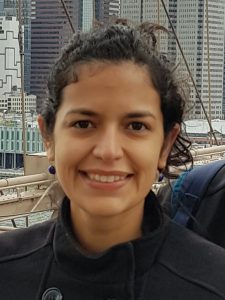
Elizabeth Catoia Varela holds a PhD in History and Criticism of Art from the Federal University of Rio de Janeiro, Brazil (2016). She worked at the Research and Documentation Center of the Modern Art Museum of Rio de Janeiro – MAM Rio (2009-2021). Her dissertation was published as a book in 2017 (Concrete Art Beyond Europe: Brazil, Argentina and the MAM Rio). She published other three books about the history of the museum. Varela was the curator of the exhibition “MAM: its history, its heritage” (2013-2016). She was awarded in 2020 with the AAM-Getty International Program/American Alliance of Museums and is a member of the College Art Association (CAA) and the International Council of Museums (ICOM).
PARTICIPATING ALUMNI

Nadhra Shahbaz Khan is Associate Professor of Art History and the Director of the Gurmani Centre for Languages & Literature at LUMS, Lahore, Pakistan. A specialist in the history of art and architecture of the Punjab from the sixteenth to the early twentieth century, Dr. Khan’s research covers the visual and material culture of the region during the Mughal, Sikh, and colonial periods. Her interest lies in investigating levels of human agency behind artefacts and architectural spaces, both as creators and consumers to understand their political, religious and socio-economic ambitions at different historical intersections. Her publications, conference papers and other research activities spread over more than a decade, especially her book titled Maharaja Ranjit Singh’s Samādhi in Lahore: A Summation of Sikh Architectural and Decorative Practices has successfully brought Sikh art and architecture to the forefront of Pakistan’s heritage discussions and conservation activities.
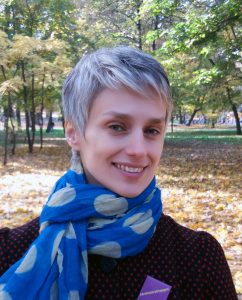
Halyna Kohut is an associate professor in the Faculty of Culture and Arts at the Ivan Franko National University of Lviv, Ukraine, where she teaches history of art, contemporary art, feminist art, and history of theatrical costume. Educated as an artist, she received her Ph.D. from the Lviv National Academy of Arts. Kohut is the CAA-Getty International Program alumna and a recipient of scholarships and grants from the Samuel H. Kress Foundation, Austrian Agency for International Mobility and Cooperation, the Canadian Institute of Ukrainian Studies at the University of Alberta, and the Queen Jadwiga Foundation at the Jagiellonian University in Cracow. Kohut specializes in eighteenth-century East European carpets and kilims. Her most recent research interest focus on woman art in Soviet Ukraine. She is especially interested in how ideology informed the identities of women artists and how they challenged that ideology with their art practices.
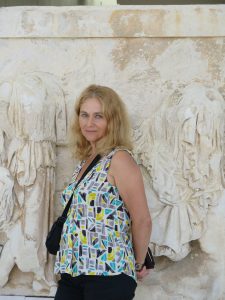
Irena Kossowska graduated from the Warsaw University in 1980. She obtained a Ph.D. degree and Habilitation at the Institute of Art of the Polish Academy of Sciences, in 1990 and 2001 respectively. Currently she is Full Professor of Art History at the Nicolaus Copernicus University in Torun, and at the Polish Institute of World Art Studies in Warsaw. She specializes in the field of nineteenth- and twentieth-century visual arts, art theory, and criticism. She is the recipient of numerous awards and fellowships, including from the Bogliasco Foundation, Center for Advanced Study in the Visual Arts, Smithsonian Institution, Zentralinstitut für Kunstgeschichte, National Humanities Center, Institut national d’histoire de l’art, Henry Moore Institute, and the British Academy. She has written extensively on Polish and European art, including Artistic Reconquest: Art in Interwar Poland and Europe, The Search for Cultural Identity in Eastern and Central Europe 1919-2014, Symbolism and Young Poland; Reinterpreting the Past: Traditionalist Artistic Trends in Central and Eastern Europe of the 1920s and 1930s; and The Beginnings of Polish Original Printmaking 1897-1917.
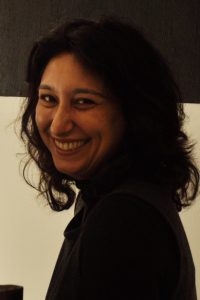
Ana Mannarino is an art historian and a professor of art history in the School of Fine Arts and the Visual Arts Postgraduate Program at the Federal University of Rio de Janeiro, where she received her PhD in history of arts and visual arts. Her research focuses on Brazilian modern and contemporary art, particularly on the relationship between text and image, art and poetry, and the production of artists’ books.
CIHA World Congress in São Paulo, January 17-21, 2022
posted by CAA — Dec 22, 2021
The National Committee of the History of Art (NCHA) is pleased to announce that the 35th World Congress of the International Committee of the History of Art (CIHA) will take place January 17-21, 2022. Originally planned as an in-person gathering in São Paulo, Brazil, the format has shifted to a hybrid model due to the pandemic and most of the speakers will participate virtually. Registration for virtual attendance will be free of charge.
Organized around the theme of “Motion: Migrations,” the conference will virtually bring together an international roster of art historians for five days of scholarly exchange. Presentations will reflect on the different forms, theories and historiographies of migration in the history of art and in its contemporary conditions (see the conference page URL). The conference theme is especially relevant to our current period of lockdowns, restricted borders, and global supply chain disruptions.
The São Paulo conference is the second of two paired congresses on the question of “Motion” (the first half took place in Florence, Italy, in 2019). The session themes and the full program are available on the program tab of the CIHA conference website. 39 US-based art historians are scheduled to speak on the program, including 12 graduate students.
The NCHA supports the participation of US art historians at all stages of their career in this important global conversation and is committed to the success of the São Paulo CIHA. To this end, the NCHA has awarded travel fellowships to students in US doctoral programs so that they can participate in the conference in person. The Committee encourages US art historians to virtually attend the conference and to share information about it with any interested groups. Finally, please consider organizing events that enable graduate students or other members of your academic community to watch CIHA sessions together. Should you have questions, don’t hesitate to reach out to any of the NCHA members.
CIHA is the oldest continuously held art history conference in the world. Quadrennial CIHA Congresses promote innovative art historical research and foster dialogue among scholars from around the globe. NCHA is the US affiliate of CIHA and works to connect scholars in the United States with their counterparts in other countries, in part by encouraging participation in and attendance at CIHA congresses and colloquia. We hope to “see” many art historians at the upcoming conference.



